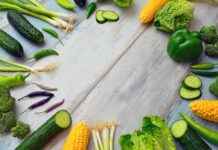Chia Seed Pudding with Yogurt is not just a trendy dish; it’s a powerhouse of nutrition packed into a delicious meal. This article delves into the nutritional benefits, preparation methods, and creative variations of chia seed pudding, particularly when combined with yogurt. This delightful superfood meal is perfect for breakfast, snacks, or even dessert.
Chia seeds are tiny, nutrient-dense seeds that are rich in omega-3 fatty acids, fiber, and antioxidants. They are known for promoting heart health, aiding digestion, and providing sustained energy. A mere two tablespoons of chia seeds can offer:
- 5 grams of protein
- 11 grams of fiber
- 18% of the daily recommended intake of calcium
The combination of chia seeds and yogurt creates a nutrient-dense meal that enhances the health benefits of both ingredients. Yogurt is a natural source of probiotics, which are beneficial for gut health. Together, they provide a creamy texture and a delightful taste, making it an ideal choice for health enthusiasts.
Preparing chia seed pudding with yogurt is a straightforward process. Here’s a simple method:
1. Mix 1/4 cup of chia seeds with 1 cup of your choice of liquid (milk, almond milk, etc.).2. Let it sit for about 10 minutes, then stir to prevent clumping.3. Add 1 cup of yogurt and mix well.4. Refrigerate for at least 2 hours or overnight for best results.
The basic ingredients include:
- Chia seeds
- Yogurt
- Liquid (milk, almond milk, coconut milk)
Feel free to add sweeteners like honey or maple syrup, and flavorings such as vanilla extract for a personalized touch.
When selecting yogurt, opt for plain, unsweetened varieties to control sugar intake. Greek yogurt is an excellent choice for those seeking extra protein and creaminess, making your pudding even more satisfying.
Flavoring your chia seed pudding can elevate its taste. Consider these options:
- Fresh fruits (berries, bananas, mango)
- Spices (cinnamon, nutmeg)
- Sweeteners (honey, agave syrup)
Chia seed pudding is a fantastic source of fiber and protein, which can aid in weight management by promoting satiety. This combination helps keep you full longer and reduces the likelihood of overeating.
The probiotics found in yogurt support a healthy gut microbiome, enhancing digestion when paired with chia seeds. This combination is particularly beneficial for maintaining gut health.
There are countless ways to enjoy chia seed pudding. Here are a few creative variations:
- Tropical Chia Seed Pudding: Incorporate mango, pineapple, or coconut for a refreshing twist.
- Chocolate Chia Seed Pudding: Mix in cocoa powder or dark chocolate for a decadent dessert.
For meal prep, chia seed pudding can be refrigerated for up to five days. Store it in airtight containers to maintain freshness. Glass jars or BPA-free plastic containers are ideal for portioning out servings.
Chia seed pudding is best served cold, but it can also be enjoyed at room temperature. If reheating, do so gently to preserve the texture and probiotic benefits of yogurt.
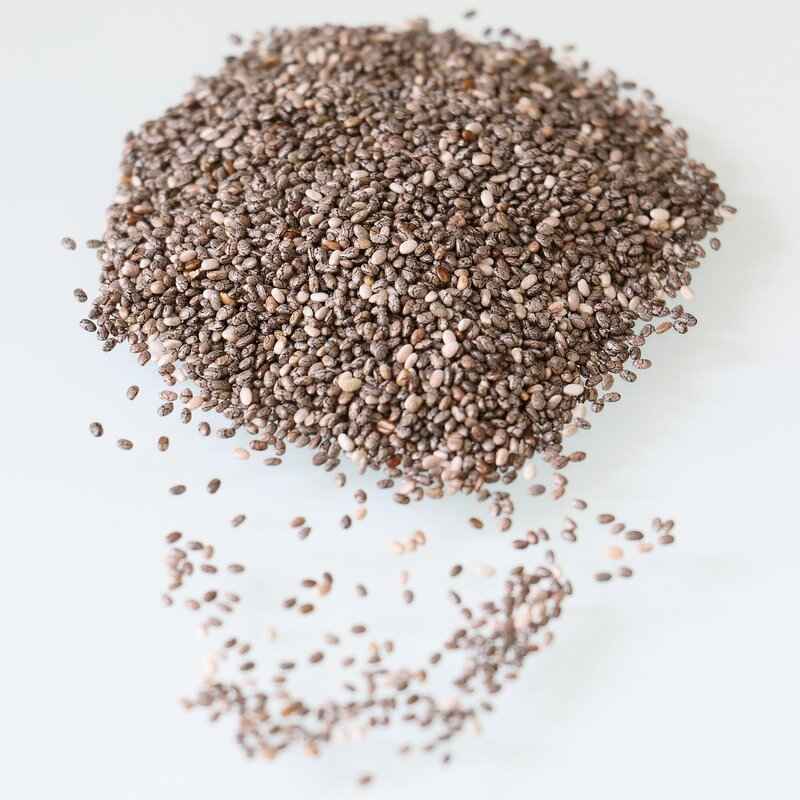
What Are Chia Seeds and Their Nutritional Benefits?
Chia seeds, often hailed as a superfood, are tiny black or white seeds derived from the Salvia hispanica plant, native to Central America. These seeds have gained immense popularity due to their remarkable nutritional profile and health benefits. Packed with essential nutrients, chia seeds are an excellent source of omega-3 fatty acids, dietary fiber, protein, and a variety of antioxidants. This article delves into the nutritional benefits of chia seeds, emphasizing their role in enhancing overall health.
- Rich in Omega-3 Fatty Acids: Chia seeds are one of the best plant-based sources of omega-3 fatty acids, specifically alpha-linolenic acid (ALA). These fatty acids are crucial for heart health, as they help reduce inflammation and lower cholesterol levels.
- High Fiber Content: With approximately 10 grams of fiber per ounce, chia seeds support digestive health. The soluble fiber in chia seeds absorbs water, forming a gel-like substance that aids in digestion and promotes a feeling of fullness.
- Protein Powerhouse: Chia seeds contain about 4 grams of protein per ounce, making them a great addition to vegetarian and vegan diets. Protein is essential for muscle repair and growth, as well as for keeping you satiated.
- Loaded with Antioxidants: These tiny seeds are rich in antioxidants, which help combat oxidative stress and protect the body from free radical damage. Antioxidants are crucial for maintaining overall health and preventing chronic diseases.
- Mineral Rich: Chia seeds are a good source of essential minerals such as calcium, magnesium, and phosphorus, which are vital for bone health and metabolic functions.
Incorporating chia seeds into your diet can significantly benefit heart health. The high omega-3 content helps to lower blood pressure and reduce triglyceride levels, which are key factors in heart disease. Additionally, the fiber in chia seeds helps to regulate cholesterol levels, further promoting cardiovascular health.
Chia seeds can be a valuable ally in weight management. Their high fiber content not only promotes feelings of fullness but also slows down the digestion of carbohydrates, leading to more stable blood sugar levels. This can help curb cravings and reduce the likelihood of overeating.
There are numerous ways to enjoy chia seeds in your meals. Here are some popular methods:
- Add them to smoothies for a nutrient boost.
- Mix chia seeds into oatmeal or yogurt for added texture and nutrition.
- Use them as a thickening agent in soups and sauces.
- Prepare chia seed pudding by soaking them in milk or a milk alternative overnight.
While chia seeds are generally safe for most people, it’s essential to consume them in moderation. Due to their high fiber content, excessive intake may lead to digestive issues such as bloating or gas. Always ensure to drink plenty of water when consuming chia seeds to aid in digestion.
In conclusion, chia seeds are a versatile and nutritious addition to any diet. Their rich nutrient profile, combined with numerous health benefits, makes them an excellent choice for those looking to improve their overall health and well-being.
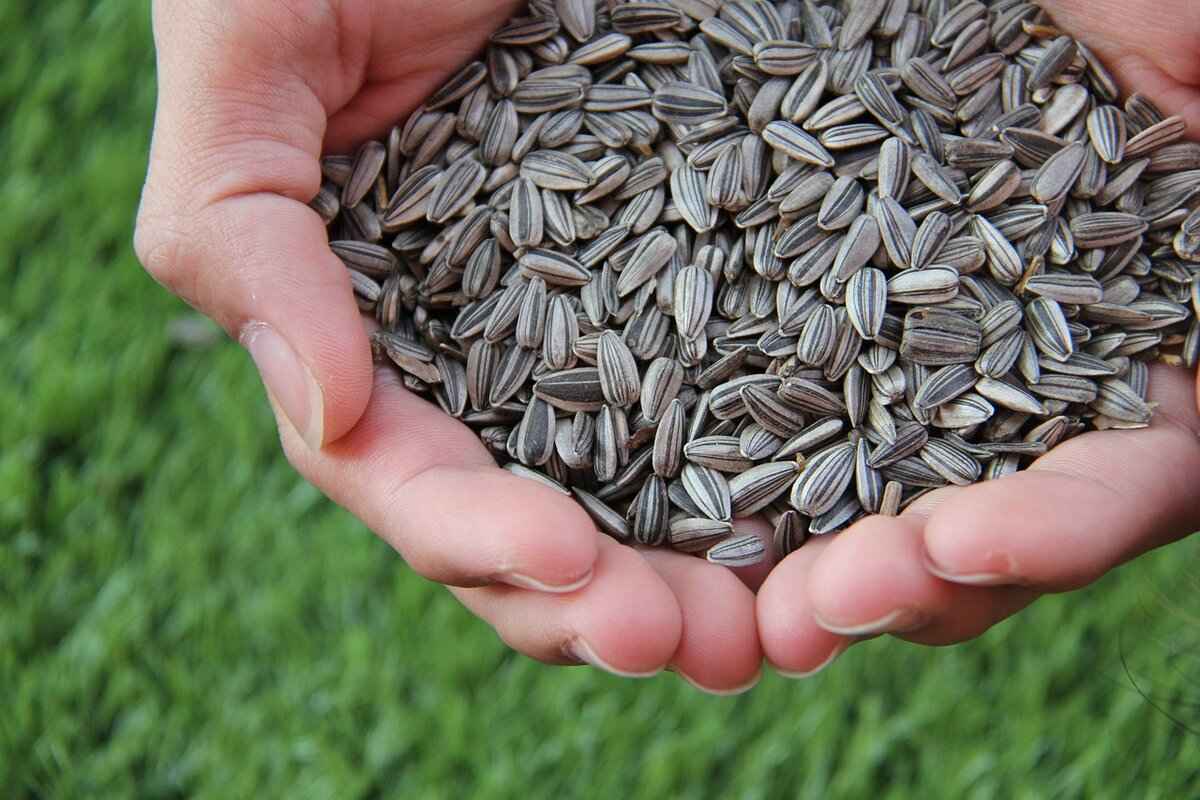
Why Combine Chia Seeds with Yogurt?
Combining chia seeds with yogurt creates a nutrient-dense meal that not only satisfies your taste buds but also provides a plethora of health benefits. This powerful duo enhances the probiotic benefits of yogurt, promoting gut health while adding delightful texture and flavor to your dish. Let’s dive deeper into the reasons why this combination is a superfood powerhouse.
What Are the Nutritional Benefits of This Combination?
- Rich in Nutrients: Chia seeds are packed with essential nutrients, including omega-3 fatty acids, protein, fiber, and various vitamins and minerals. When combined with yogurt, which is high in calcium and probiotics, you get a balanced meal that supports overall health.
- Enhanced Digestive Health: Yogurt is well-known for its probiotic content, which supports a healthy gut microbiome. Adding chia seeds, which are high in fiber, further aids digestion and helps maintain regular bowel movements.
- Weight Management: The combination of chia seeds and yogurt can help you feel fuller for longer due to the high fiber content of chia seeds. This can be beneficial for those looking to manage their weight, as it reduces the likelihood of unhealthy snacking.
How Do Chia Seeds and Yogurt Work Together?
When chia seeds are mixed with yogurt, they absorb liquid and swell, creating a creamy texture that enhances the overall eating experience. This transformation not only adds visual appeal but also makes the meal more satisfying. The combination of creamy yogurt and the slight crunch of chia seeds creates a delightful contrast that is both enjoyable and nutritious.
What Are Some Delicious Ways to Combine Them?
There are countless ways to incorporate chia seeds and yogurt into your diet. Here are a few popular ideas:
- Chia Seed Pudding: Mix chia seeds with yogurt and your choice of milk, let it sit overnight, and enjoy a delicious pudding topped with fruits, nuts, or granola.
- Smoothies: Blend yogurt, chia seeds, and your favorite fruits for a nutrient-packed smoothie that’s perfect for breakfast or a snack.
- Parfaits: Layer yogurt, chia seeds, and fresh fruits in a glass for a visually appealing and healthy dessert or breakfast option.
How to Choose the Right Yogurt?
When selecting yogurt for your chia seed combination, opt for plain, unsweetened varieties to control sugar intake. Greek yogurt is an excellent choice due to its thick texture and higher protein content, making your meal more filling and satisfying.
Final Thoughts
The combination of chia seeds and yogurt is not only delicious but also offers numerous health benefits, making it a fantastic addition to your diet. Whether you enjoy it as a pudding, in smoothies, or as part of a parfait, this nutrient-dense meal is sure to delight your palate while nourishing your body.

How to Prepare Chia Seed Pudding with Yogurt?
Chia seed pudding is a versatile and nutritious dish that can be easily prepared at home. It combines the health benefits of chia seeds with the creamy texture of yogurt, making it a delightful meal or snack. This guide will walk you through the process of preparing chia seed pudding with yogurt, ensuring that you achieve the perfect consistency and flavor.
Preparing chia seed pudding with yogurt is a straightforward process that can be completed in just a few steps. Here’s a detailed breakdown:
- Gather Your Ingredients: You will need chia seeds, yogurt (plain or flavored), and a liquid such as milk or plant-based milk. Optional ingredients include sweeteners like honey or maple syrup, and flavorings such as vanilla extract.
- Soak the Chia Seeds: In a bowl, combine chia seeds with your chosen liquid. A common ratio is 1/4 cup of chia seeds to 1 cup of liquid. Stir well to prevent clumping, then let it sit for about 10-15 minutes. This allows the chia seeds to absorb the liquid and expand, creating a gel-like texture.
- Mix with Yogurt: Once the chia seeds have soaked, add your yogurt to the mixture. Stir thoroughly to combine. This step is crucial as it incorporates the yogurt’s creaminess into the pudding, enhancing both texture and flavor.
- Let It Set: After mixing, cover the bowl and place it in the refrigerator. Allow the pudding to set for at least 2 hours, or overnight for the best results. This resting period helps the flavors meld together and improves the overall texture.
- Serve and Enjoy: Once set, your chia seed pudding is ready to be served. You can enjoy it plain or top it with your favorite fruits, nuts, or granola to add extra flavor and nutrition.
- Experiment with Ratios: Depending on your texture preference, you may want to adjust the ratio of chia seeds to liquid. More seeds will create a thicker pudding, while less will yield a creamier texture.
- Choose the Right Yogurt: For a healthier option, opt for unsweetened yogurt. Greek yogurt adds additional protein and creaminess, making your pudding more filling.
- Flavor Variations: Don’t hesitate to experiment with different flavors. Adding cocoa powder, cinnamon, or fresh fruits can transform your pudding into a delicious treat.
Chia seed pudding with yogurt is not only easy to make but also customizable to suit your taste preferences. By following these steps and tips, you can create a nutritious and satisfying meal that fits perfectly into your healthy lifestyle.
Essential Ingredients for Chia Seed Pudding
Chia seed pudding is a delightful and nutritious dish that has gained popularity for its health benefits and versatility. To create a delicious chia seed pudding, it is essential to understand the basic ingredients that form the foundation of this superfood meal.
- Chia Seeds: The star ingredient, chia seeds are tiny, nutrient-dense seeds packed with omega-3 fatty acids, fiber, and protein. When soaked in liquid, they expand and form a gel-like consistency, which is crucial for the pudding texture.
- Yogurt: Incorporating yogurt into your chia seed pudding not only enhances its creaminess but also adds probiotics that support gut health. Opt for plain, unsweetened yogurt to keep added sugars at bay, or choose Greek yogurt for a thicker, protein-rich option.
- Liquid: The choice of liquid is vital for achieving the desired consistency. Common options include milk (dairy or plant-based), such as almond milk, coconut milk, or oat milk. Each type of liquid offers unique flavors and nutritional benefits, allowing for customization based on personal preferences.
In addition to these primary ingredients, several optional components can elevate the flavor and nutritional profile of your chia seed pudding:
- Sweeteners: To enhance the taste, consider adding natural sweeteners like honey, maple syrup, or agave nectar. These can be adjusted according to your sweetness preference.
- Flavorings: Vanilla extract, almond extract, or spices such as cinnamon or nutmeg can add depth to your pudding. These flavorings not only enhance taste but also provide additional health benefits.
- Fruits: Fresh or frozen fruits like berries, bananas, or mangoes can be mixed in or used as toppings. They add natural sweetness and a burst of vitamins and antioxidants.
- Nuts and Seeds: For added crunch and nutritional value, sprinkle some nuts or seeds on top before serving. Options include almonds, walnuts, or pumpkin seeds, which contribute healthy fats and protein.
The beauty of chia seed pudding lies in its versatility. With the essential ingredients outlined above, you can create a base that suits your taste and dietary needs. Experimenting with different combinations of liquids, sweeteners, and toppings can lead to endless variations, making this dish an exciting addition to your meal prep routine.
Whether enjoyed as a breakfast option, snack, or dessert, chia seed pudding is not only a satisfying choice but also a nutritious one. By understanding the essential ingredients and how they work together, you can craft a delicious and healthful meal that aligns with your dietary goals.
Choosing the Right Yogurt
When it comes to creating a delicious and nutritious chia seed pudding, is a vital step that can significantly impact both the flavor and health benefits of your dish. With so many options available, it’s essential to understand the differences and select the one that best meets your dietary needs and taste preferences.
The yogurt you choose can alter the nutritional profile of your chia seed pudding. For instance, plain, unsweetened yogurt is an excellent choice for those looking to control their sugar intake. Many flavored yogurts are loaded with added sugars, which can detract from the health benefits of your pudding. By opting for an unsweetened variety, you can enjoy the natural tanginess of yogurt without unnecessary calories.
Another popular option is Greek yogurt, known for its thick, creamy texture and higher protein content compared to regular yogurt. This makes it an ideal choice for those seeking a more filling meal. The increased protein not only contributes to satiety but also supports muscle repair and growth, making it particularly beneficial for active individuals.
- Non-Dairy Yogurt: For those with lactose intolerance or dairy allergies, non-dairy yogurts made from almond, coconut, or soy can be excellent alternatives. Ensure that they are fortified with calcium and probiotics to maintain similar health benefits.
- Flavored Yogurt: While flavored options can add a delightful twist to your pudding, they often contain added sugars and artificial ingredients. If you prefer a hint of sweetness, consider adding fresh fruit or a drizzle of honey to your unsweetened base instead.
- Low-Fat vs. Full-Fat: The choice between low-fat and full-fat yogurt can depend on your dietary goals. Full-fat yogurt can provide a richer taste and may help you feel fuller for longer, while low-fat options can be lower in calories.
To make chia seed pudding, start by mixing chia seeds with your choice of liquid—such as almond milk or coconut milk—and let it sit until it thickens. Next, gently fold in your selected yogurt. This combination not only enhances the pudding’s creaminess but also boosts its probiotic content, which is essential for gut health.
Customization is key to making your chia seed pudding enjoyable. Consider the flavor profiles you prefer and how they complement the yogurt. For example, adding vanilla extract to plain yogurt can create a delightful base, while mixing in cocoa powder with Greek yogurt can satisfy chocolate cravings without compromising health.
In summary, the yogurt you choose for your chia seed pudding plays a crucial role in determining its taste, texture, and nutritional value. By selecting plain, unsweetened yogurt or Greek yogurt, you can create a delicious and healthful meal that aligns with your dietary goals. Remember to explore various yogurt types and flavorings to keep your pudding exciting and satisfying.
Liquid Options for Chia Seed Pudding
When it comes to making chia seed pudding, the choice of liquid can significantly influence both the flavor and nutritional profile of the dish. This flexibility allows you to tailor your pudding to suit your personal taste and dietary needs. Below, we explore various liquid options that can be used to create a delicious and healthful chia seed pudding.
Using different liquids not only enhances the taste of your chia seed pudding but also contributes to its overall health benefits. Each liquid option brings its own unique set of nutrients and flavors, allowing for a customizable experience that can cater to various dietary preferences.
Almond milk is a popular dairy alternative that is low in calories and rich in vitamins, particularly vitamin E. This liquid adds a subtle nutty flavor to your pudding, making it a great choice for those who enjoy a hint of sweetness without added sugars. Additionally, almond milk is often fortified with calcium and vitamin D, enhancing the nutritional value of your meal.
Coconut milk offers a rich, creamy texture and a tropical flavor that can transform your chia seed pudding into a delightful dessert. It is high in healthy fats, particularly medium-chain triglycerides (MCTs), which can provide a quick source of energy. This option is perfect for those looking to indulge in a creamy treat while still enjoying the health benefits of chia seeds.
Regular cow’s milk is a traditional option that provides a good source of protein, calcium, and vitamins. It adds a rich, creamy texture to chia seed pudding, making it satisfying and filling. For those who are not lactose intolerant, regular milk can be an excellent choice to boost the protein content of the pudding, making it a more substantial meal.
Oat milk has gained popularity in recent years as a creamy, dairy-free alternative. It is made from whole oats and is naturally sweet, which can enhance the flavor of your chia seed pudding. Oat milk is also high in fiber, which can aid in digestion and contribute to a feeling of fullness.
Cashew milk is another nut-based option that offers a smooth and creamy consistency. It is lower in calories compared to whole milk and is a good source of healthy fats. The subtle flavor of cashew milk complements the chia seeds without overpowering them, making it a great base for flavored puddings.
Hemp milk is made from hemp seeds and is rich in omega-3 and omega-6 fatty acids, making it a nutritious choice for chia seed pudding. This option is also vegan and lactose-free, appealing to those with dietary restrictions. Hemp milk has a slightly nutty flavor that pairs well with various toppings and flavorings.
When selecting a liquid for your chia seed pudding, consider your dietary needs, flavor preferences, and nutritional goals. For instance, if you are looking for a low-calorie option, almond milk might be your best bet. Alternatively, if you want a creamier texture and added healthy fats, coconut or cashew milk could be ideal. Experimenting with different liquids can lead to exciting new flavors and textures in your pudding.
In conclusion, the choice of liquid can greatly enhance your chia seed pudding experience. Whether you opt for almond milk, coconut milk, or any other alternative, each option provides unique flavors and health benefits that cater to your personal preferences.
How to Flavor Your Chia Seed Pudding?
Flavoring your chia seed pudding is an exciting way to enhance its taste and make it a delightful treat. With a variety of options available, you can easily create a dish that suits your palate. The beauty of chia seed pudding lies in its versatility, allowing you to experiment with different flavors and ingredients. In this section, we will explore various methods to flavor your chia seed pudding, ensuring that each bite is a burst of deliciousness.
Flavoring is crucial because it transforms a basic chia seed pudding into a gourmet experience. While chia seeds themselves have a mild taste, adding different ingredients can elevate the pudding, making it more enjoyable and satisfying. This also allows you to cater to various dietary preferences and flavor profiles.
- Vanilla Extract: A few drops of high-quality vanilla extract can infuse your pudding with a warm, sweet aroma that complements the texture beautifully.
- Honey or Maple Syrup: For those who prefer a touch of sweetness, natural sweeteners like honey or maple syrup can enhance the overall flavor while keeping it healthy.
- Fresh Fruits: Adding fresh fruits such as berries, bananas, or mangoes not only introduces natural sweetness but also boosts the nutritional content of your pudding.
- Spices: Spices like cinnamon, nutmeg, or cardamom can add a unique twist. A sprinkle of cinnamon, for instance, can provide a warm, comforting flavor.
- Nut Butters: Incorporating almond or peanut butter adds creaminess and a rich flavor, making the pudding more filling.
- Cocoa Powder: For chocolate lovers, unsweetened cocoa powder or cacao nibs can turn your pudding into a decadent dessert.
Combining different flavoring options can lead to exciting new tastes. Here are some creative combinations to consider:
1. Vanilla and Almond Butter: A rich, creamy blend that offers a nutty flavor.2. Chocolate and Banana: A delightful pairing that satisfies sweet cravings.3. Tropical Delight: Combine coconut milk with pineapple and mango for a refreshing treat.4. Berry Medley: Mix various berries with a hint of mint for a burst of freshness.
To achieve the best flavor in your chia seed pudding, follow these simple steps:
- Soak the Chia Seeds: Start by soaking your chia seeds in your choice of liquid (milk, almond milk, etc.) for at least 30 minutes or overnight. This allows them to expand and absorb the liquid.
- Add Flavorings: Once the seeds have soaked, mix in your chosen flavorings. Be sure to taste and adjust as necessary.
- Chill and Serve: Refrigerate the pudding for a few hours to allow the flavors to meld. Serve it cold, topped with additional fruits or nuts if desired.
To maximize the flavor of your chia seed pudding, consider these expert tips:
- Quality Ingredients: Use high-quality ingredients, especially for extracts and sweeteners, to ensure the best flavor.
- Experiment: Don’t be afraid to try new combinations. The more you experiment, the more you’ll discover your favorite flavors.
- Balance Sweetness: Aim for a balance between sweetness and other flavors to create a well-rounded pudding.
By exploring these flavoring options and combinations, you can create a chia seed pudding that is not only nutritious but also tantalizingly delicious. Enjoy the process of experimenting and discovering your unique flavor combinations!

What Are the Health Benefits of Chia Seed Pudding?
Chia seed pudding has gained immense popularity as a nutritious meal option, and for good reason. Packed with essential nutrients and health benefits, this dish is not only delicious but also incredibly versatile. In this section, we will explore the various health benefits of chia seed pudding, emphasizing its role in improving digestion, heart health, and energy levels.
Chia seed pudding offers a myriad of health benefits that cater to various dietary needs and preferences. Here are some of the key advantages:
- Improved Digestion: Chia seeds are an excellent source of dietary fiber, which plays a crucial role in promoting healthy digestion. The high fiber content helps regulate bowel movements, preventing constipation and promoting a healthy gut.
- Heart Health: Chia seeds are rich in omega-3 fatty acids, which are known to support cardiovascular health. These healthy fats can help lower cholesterol levels and reduce inflammation, contributing to a healthier heart.
- Sustained Energy Levels: The combination of fiber and protein in chia seeds helps to keep you feeling full for longer periods. This satiety can prevent unhealthy snacking and provide a steady source of energy throughout the day.
- Bone Health: Chia seeds are also a great source of essential minerals like calcium, magnesium, and phosphorus, which are vital for maintaining strong bones and preventing osteoporosis.
- Weight Management: Due to their high fiber content, chia seeds can aid in weight management by promoting a sense of fullness. This can help control appetite and reduce calorie intake.
In addition to the specific benefits mentioned, chia seeds contribute to overall wellness in several ways:
- Antioxidant Properties: Chia seeds are loaded with antioxidants that help combat oxidative stress and inflammation in the body, promoting overall health.
- Blood Sugar Regulation: The soluble fiber in chia seeds can help slow down the absorption of sugar in the bloodstream, which may aid in managing blood sugar levels.
- Hydration: Chia seeds can absorb up to 12 times their weight in water, which can help keep you hydrated and support optimal bodily functions.
To fully reap the health benefits of chia seed pudding, consider the following tips:
- Choose Quality Ingredients: Opt for organic chia seeds and high-quality yogurt to ensure you are getting the most nutrients.
- Experiment with Flavors: Incorporate various fruits, nuts, or spices to enhance both the taste and nutritional profile of your pudding.
- Mind Portion Sizes: While chia seeds are healthy, they are also calorie-dense. Be mindful of portion sizes to maintain a balanced diet.
In summary, chia seed pudding is a powerhouse of nutrition that offers numerous health benefits. By incorporating this superfood into your diet, you can improve digestion, support heart health, and maintain sustained energy levels. With its versatility and ease of preparation, chia seed pudding is an ideal choice for anyone looking to enhance their overall wellness.
Probiotics and Gut Health
Probiotics play a vital role in maintaining a healthy gut microbiome, which is essential for overall well-being. Among the many sources of probiotics, yogurt stands out as a natural and delicious option. It is packed with beneficial bacteria that aid digestion and support immune function. When yogurt is combined with chia seeds, it creates a nutrient-dense pudding that not only tastes great but also offers numerous health benefits.
Probiotics are live microorganisms that provide health benefits when consumed in adequate amounts. They help balance the gut flora, which is crucial for digestive health. An imbalance in gut bacteria can lead to various issues, including bloating, constipation, and even more serious conditions like irritable bowel syndrome (IBS). By incorporating probiotics into your diet through foods like yogurt, you can promote a healthier gut environment.
Yogurt is a fermented dairy product that contains live cultures, making it an excellent source of probiotics. Regular consumption of yogurt has been associated with improved digestion, enhanced nutrient absorption, and a strengthened immune system. Additionally, yogurt is rich in protein and calcium, contributing to overall health.
Chia seeds are not only a source of fiber but also provide essential fatty acids and antioxidants. The high fiber content in chia seeds aids in digestion by promoting regular bowel movements and preventing constipation. When combined with yogurt, chia seeds create a synergistic effect that enhances gut health. The combination of probiotics from yogurt and the fiber from chia seeds works together to support a balanced gut microbiome.
- Improved Digestion: The probiotics in yogurt help break down food, while the fiber in chia seeds promotes regularity.
- Enhanced Nutrient Absorption: A healthy gut microbiome improves the body’s ability to absorb nutrients from food.
- Weight Management: The combination of protein, fiber, and healthy fats helps keep you full longer, reducing cravings.
- Heart Health: Omega-3 fatty acids from chia seeds contribute to cardiovascular health.
Making chia seed pudding with yogurt is simple and requires minimal ingredients. Start by mixing 1/4 cup of chia seeds with 1 cup of yogurt and your choice of liquid (such as almond milk or coconut milk). Stir well and let it sit for about 30 minutes to allow the chia seeds to absorb the liquid and thicken the mixture. You can then add sweeteners or flavorings, such as honey, vanilla extract, or fresh fruits, to enhance the taste.
This pudding can be customized in countless ways. For a tropical twist, consider adding diced mango or pineapple. For a chocolatey treat, mix in cocoa powder or chocolate protein powder. The options are endless, allowing you to tailor the pudding to your taste preferences while reaping the health benefits.
In summary, incorporating yogurt and chia seeds into your diet can significantly enhance gut health. This powerful combination not only provides essential nutrients but also supports digestion and overall wellness. By making chia seed pudding a regular part of your meals, you can enjoy a delicious and healthful treat that nourishes your body from the inside out.
Weight Management and Satiety
are crucial aspects of a healthy lifestyle, and incorporating chia seed pudding into your diet can significantly assist in achieving these goals. Chia seeds, known for their remarkable fiber content, play a vital role in promoting feelings of fullness and reducing overall calorie intake.
One of the standout features of chia seeds is their ability to absorb liquid and expand in size. When soaked in a liquid, these tiny seeds can swell up to 10-12 times their original weight, forming a gel-like consistency. This process not only enhances the texture of chia seed pudding but also contributes to a sense of satiety. By consuming foods that create a feeling of fullness, individuals are less likely to indulge in unhealthy snacking or overeating during meals.
Moreover, the high fiber content found in chia seeds aids in regulating blood sugar levels. This stabilization prevents sudden spikes and crashes in energy, which are often associated with cravings and excessive hunger. By maintaining steady energy levels, individuals can make more mindful food choices throughout the day.
In addition to fiber, chia seeds are rich in omega-3 fatty acids, which are essential for overall health. These healthy fats not only support heart health but also contribute to satiety. Including omega-3s in your diet can help balance hormones that regulate appetite, further supporting weight management efforts.
When combined with yogurt, chia seed pudding becomes even more effective for weight management. Yogurt is an excellent source of protein, which is another nutrient known to promote feelings of fullness. The combination of protein from yogurt and fiber from chia seeds creates a balanced meal that can keep you satisfied for hours.
To maximize the benefits of chia seed pudding for weight management, consider incorporating a variety of flavors and ingredients. For instance, adding fresh fruits like berries or bananas not only enhances the taste but also provides additional vitamins and minerals. You can also experiment with spices such as cinnamon or vanilla, which can add flavor without extra calories.
It’s essential to be mindful of portion sizes when enjoying chia seed pudding. While it is a nutritious option, consuming it in moderation is key to maintaining a balanced diet. A typical serving size of chia seed pudding is about 1/4 cup of chia seeds mixed with 1 cup of liquid, which can serve as a filling snack or a part of a larger meal.
For those looking to manage their weight effectively, chia seed pudding can be a game-changer. Its unique properties not only promote satiety but also support a balanced diet. By incorporating this superfood into your meals, you can enjoy a delicious treat while working towards your health and fitness goals.
In summary, chia seed pudding is an excellent addition to any weight management plan. Its high fiber content, combined with the protein from yogurt, creates a satisfying meal that helps reduce the likelihood of overeating. With various flavor options available, it’s easy to keep this nutritious dish exciting and enjoyable.
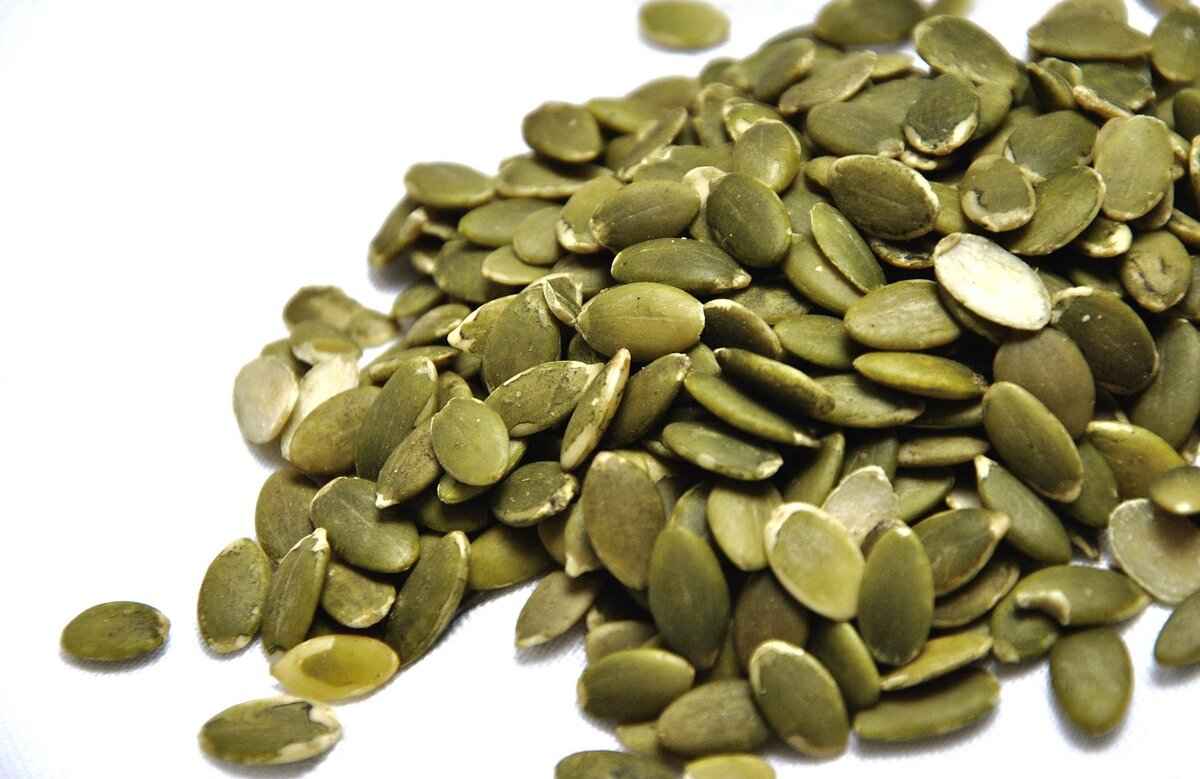
What Are Some Creative Variations of Chia Seed Pudding?
Chia seed pudding has become a popular choice for health-conscious individuals seeking a delicious and nutritious meal option. The versatility of this dish allows for a plethora of creative variations that cater to different taste preferences and dietary needs. Here, we explore some exciting and innovative ways to enjoy chia seed pudding, ensuring that every bite is both satisfying and healthful.
There are countless variations of chia seed pudding to explore, each offering a unique flavor profile and nutritional benefits. From tropical fruit toppings to chocolate-infused recipes, creativity can make this meal exciting and enjoyable for everyone.
For those who crave a taste of the tropics, consider adding fresh fruits like mango, pineapple, or coconut to your chia seed pudding. These fruits not only enhance the flavor but also provide additional vitamins and minerals. Here’s a simple recipe to get you started:
- Ingredients:
- 1/4 cup chia seeds
- 1 cup coconut milk
- 1/2 cup diced mango
- 1/2 cup diced pineapple
- 1 tablespoon honey (optional)
- Instructions:
- Mix chia seeds with coconut milk and let it sit for 30 minutes.
- Stir in honey, then layer with diced mango and pineapple.
- Refrigerate for a few hours before serving.
If you have a sweet tooth, chocolate chia seed pudding is a fantastic option. By incorporating cocoa powder or chocolate protein powder, you can create a rich and indulgent dessert that still retains its health benefits. Try this easy recipe:
- Ingredients:
- 1/4 cup chia seeds
- 1 cup almond milk
- 2 tablespoons cocoa powder
- 1 tablespoon maple syrup
- Chocolate shavings for garnish
- Instructions:
- Combine chia seeds, almond milk, cocoa powder, and maple syrup in a bowl.
- Mix well and let it sit for at least 2 hours or overnight.
- Top with chocolate shavings before serving.
For a more textured pudding, consider adding various nuts and seeds. Ingredients like almonds, walnuts, or pumpkin seeds can provide a delightful crunch and additional nutrients. A simple nutty chia pudding could include:
- Ingredients:
- 1/4 cup chia seeds
- 1 cup cashew milk
- 2 tablespoons almond butter
- 1/4 cup mixed nuts, chopped
- Instructions:
- Mix chia seeds with cashew milk and let it set.
- Stir in almond butter and top with mixed nuts before serving.
Embrace the changing seasons by incorporating seasonal fruits and spices into your chia pudding. For example, add cinnamon and apples in the fall or berries and mint in the summer. These combinations not only enhance flavor but also provide seasonal nutritional benefits.
The beauty of chia seed pudding lies in its ability to be customized. Feel free to experiment with different liquids, sweeteners, and toppings. Whether you prefer a creamy texture with Greek yogurt or a dairy-free option with almond milk, the possibilities are endless. By exploring various flavor profiles, you can create a chia seed pudding that suits your taste and dietary preferences.
Tropical Chia Seed Pudding Recipes
are a delightful way to infuse your meals with the vibrant flavors of the tropics. This unique twist on traditional chia seed pudding not only tantalizes your taste buds but also packs a nutritional punch. By incorporating tropical fruits such as mango, pineapple, and coconut, you can create a delicious dessert or breakfast option that is both satisfying and healthful.
Tropical fruits are known for their rich flavors and nutritional benefits. For instance, mangoes are loaded with vitamins A and C, which are essential for maintaining healthy skin and boosting your immune system. Pineapples are not only refreshing but also contain bromelain, an enzyme that aids digestion. Coconut, on the other hand, provides healthy fats that can help keep you satiated longer.
Making tropical chia seed pudding is a straightforward process. Here’s a simple recipe to get you started:
- Ingredients:
- 1/4 cup chia seeds
- 1 cup coconut milk (or any milk of your choice)
- 1 ripe mango, diced
- 1/2 cup pineapple chunks
- 1 tablespoon honey or maple syrup (optional)
- 1/4 cup shredded coconut (optional for topping)
- Instructions:
- In a bowl, mix chia seeds with coconut milk and stir well.
- Add honey or maple syrup if desired for sweetness.
- Let the mixture sit for about 10-15 minutes, stirring occasionally, until it thickens.
- Once thickened, layer the pudding with diced mango and pineapple in serving glasses.
- Top with shredded coconut if using, and enjoy!
The beauty of chia seed pudding lies in its versatility. Here are a few more tropical variations to consider:
- Passion Fruit Chia Pudding: Add the pulp of fresh passion fruit for a tangy twist.
- Banana and Coconut Chia Pudding: Mash ripe bananas into the pudding mix for natural sweetness and creaminess.
- Mixed Tropical Fruit Medley: Combine a variety of tropical fruits like kiwi, papaya, and guava for an explosion of flavors.
To further boost the health benefits of your pudding, consider adding:
- Superfood Powders: Incorporate spirulina or acai powder for added nutrients.
- Nuts and Seeds: Top with almonds, walnuts, or pumpkin seeds for a crunchy texture and extra protein.
- Herbs and Spices: Add a sprinkle of cinnamon or fresh mint to elevate the flavor profile.
In conclusion, tropical chia seed pudding is not just a feast for the senses; it’s also a powerhouse of nutrition. With its vibrant colors and delicious flavors, this dish can easily become a staple in your diet. Whether enjoyed as a breakfast option or a refreshing dessert, the combination of chia seeds and tropical fruits makes for a delightful and healthful treat.
Chocolate Chia Seed Pudding Ideas
For those who have a deep love for chocolate, chocolate chia seed pudding is an excellent way to indulge your cravings while also reaping the health benefits of chia seeds. This delightful dessert not only satisfies your sweet tooth but also offers a rich source of nutrients, making it a guilt-free treat.
Chia seeds are known for their high fiber and omega-3 fatty acid content, which can help improve digestion and promote heart health. By incorporating chocolate into your chia seed pudding, you can create a dessert that is both delicious and nutritious. The addition of cocoa powder or chocolate protein powder enhances the flavor, resulting in a dessert that feels indulgent without compromising your health goals.
Making chocolate chia seed pudding is simple and requires minimal ingredients. Here’s a quick recipe:
- Ingredients:
- 1/4 cup chia seeds
- 1 cup almond milk (or any milk of your choice)
- 2 tablespoons cocoa powder or chocolate protein powder
- 1-2 tablespoons maple syrup or honey (optional)
- 1 teaspoon vanilla extract
1. In a bowl, whisk together the almond milk, cocoa powder, maple syrup, and vanilla extract.2. Stir in the chia seeds until well combined.3. Cover and refrigerate for at least 4 hours or overnight.4. Serve chilled, and enjoy the creamy, chocolatey goodness!
This pudding is not just a treat; it offers several health benefits:
- Rich in Antioxidants: Cocoa powder is packed with antioxidants that help combat oxidative stress.
- Supports Weight Management: The high fiber content in chia seeds promotes a feeling of fullness, which can aid in weight control.
- Boosts Energy Levels: The combination of protein and healthy fats provides sustained energy, making it a perfect snack or breakfast option.
There are countless ways to customize your chocolate chia seed pudding to keep it exciting:
- Mint Chocolate: Add a few drops of peppermint extract for a refreshing twist.
- Chocolate Peanut Butter: Swirl in some natural peanut butter for a rich and creamy texture.
- Fruit Toppings: Top with sliced bananas, strawberries, or raspberries for added flavor and nutrients.
Chocolate chia seed pudding can be served in various ways:
- In individual jars for meal prep.
- With a dollop of whipped cream or coconut cream for extra indulgence.
- Sprinkled with nuts or granola for added crunch.
In conclusion, chocolate chia seed pudding is a versatile and healthful dessert that can be tailored to fit your personal taste. By incorporating chocolate, you not only enhance the flavor but also create a satisfying dish that aligns with your health goals. Whether enjoyed as a breakfast, snack, or dessert, this pudding is sure to please any chocolate lover!
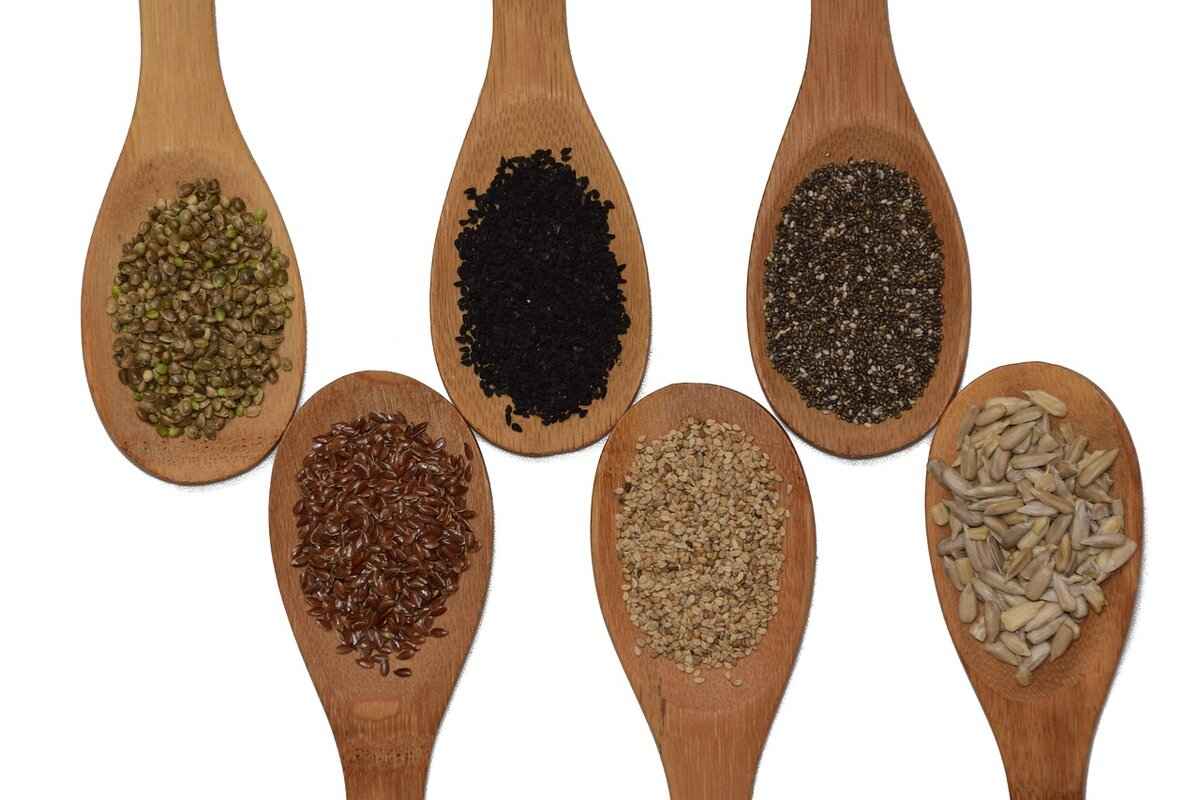
How to Store Chia Seed Pudding for Meal Prep?
Proper storage is essential for meal prep, especially when it comes to dishes like chia seed pudding. This nutritious and versatile meal can be a lifesaver for those with busy lifestyles. Chia seed pudding can be refrigerated for up to five days, allowing you to prepare it in advance and enjoy its flavor and texture throughout the week.
Storing chia seed pudding correctly not only preserves its taste but also maintains its nutritional value. The pudding is made by soaking chia seeds in liquid, which leads to the formation of a gel-like consistency. If not stored properly, this gel can break down, resulting in an unappetizing texture.
Choosing the right container is vital for maintaining the quality of your chia seed pudding. Here are some options:
- Airtight Glass Jars: These are ideal as they prevent air from entering, which can lead to spoilage. They are also easy to clean and do not retain odors.
- BPA-Free Plastic Containers: Lightweight and durable, these containers are great for on-the-go meals. Ensure they are well-sealed to avoid leaks.
When preparing your chia seed pudding for storage, consider the following steps:
- Mix Ingredients: Combine chia seeds with your choice of liquid and yogurt in a bowl.
- Let It Sit: Allow the mixture to rest for about 10-15 minutes to let the chia seeds absorb the liquid.
- Layer Flavors: If you plan to add fruits or toppings, consider layering them on top of the pudding before sealing the container. This keeps them fresh and prevents sogginess.
- Seal and Store: Close the container tightly and place it in the refrigerator.
Chia seed pudding is typically enjoyed cold, but some may prefer it at room temperature. If you choose to reheat it, do so gently. Here are some tips:
- Microwave: Heat in short intervals (15-20 seconds), stirring in between to ensure even warming.
- Stovetop: Place in a saucepan over low heat, stirring continuously until warmed through.
While chia seed pudding is best enjoyed fresh, you can freeze it for longer storage. However, be aware that the texture may change once thawed. To freeze:
- Portion Out: Divide the pudding into individual servings.
- Use Freezer-Safe Containers: Ensure containers are airtight to prevent freezer burn.
When ready to eat, thaw in the refrigerator overnight and stir well before serving.
Proper storage of chia seed pudding not only enhances convenience for meal prep but also ensures you enjoy its full flavor and nutritional benefits throughout the week. By using the right containers and following best practices for storage, you can make the most of this delicious superfood.
Best Containers for Storage
When it comes to meal prep, proper storage is essential for maintaining the freshness and quality of your food. This is especially true for items like chia seed pudding, which can be made in advance and enjoyed throughout the week. Understanding the importance of using the right containers can enhance your meal prep experience significantly.
Using airtight containers is crucial for preserving the freshness of your food. These containers create a seal that prevents air, moisture, and contaminants from entering, which can lead to spoilage. This is particularly important for chia seed pudding, as exposure to air can cause it to dry out or develop an unpleasant texture.
There are various types of containers that work well for storing chia seed pudding:
- Glass Jars: Glass containers are an excellent choice due to their non-reactive nature and ability to maintain temperature. They are also easy to clean and can be reused indefinitely.
- BPA-Free Plastic Containers: For those who prefer lightweight options, BPA-free plastic containers are a good alternative. They are durable and often come with secure lids that help keep your pudding fresh.
- Silicone Containers: Silicone containers are flexible and can be easily squeezed to release the contents. They are also dishwasher-safe and come in various shapes and sizes.
Portioning your chia seed pudding into individual servings can simplify your meal prep. Using containers with measured markings can help you control serving sizes, making it easier to manage your daily intake. This is particularly useful for those who are tracking their nutrition or following specific dietary plans.
Yes, there are some important tips to keep in mind when storing chia seed pudding:
- Labeling: Always label your containers with the date they were made. This will help you keep track of freshness and ensure you consume them within the recommended time frame.
- Temperature: Store your containers in the refrigerator to maintain optimal freshness. Chia seed pudding can last up to five days when stored correctly.
- Avoiding Freezing: While some foods freeze well, chia seed pudding is best enjoyed fresh. Freezing can alter its texture, making it less enjoyable.
Absolutely! Reusing containers is not only environmentally friendly but also cost-effective. Just make sure to clean them thoroughly between uses to prevent any cross-contamination of flavors or bacteria.
Investing in quality storage containers is a small yet significant step towards successful meal prep. By choosing the right containers, you can ensure that your chia seed pudding remains fresh and delicious, ready for quick access whenever you need a nutritious snack or meal. Remember, the goal is to make your meal prep as efficient and enjoyable as possible, and the right containers can help you achieve just that.
Reheating or Serving Cold?
When it comes to enjoying chia seed pudding, the question of temperature is often debated. While this delightful dish is traditionally served cold, there are many who appreciate it at room temperature. Understanding the best practices for serving chia seed pudding, especially concerning reheating, can enhance your overall experience.
Chia seed pudding is typically prepared by soaking chia seeds in a liquid, which allows them to swell and create a gel-like consistency. This process not only enhances the texture but also retains the nutritional benefits of the ingredients. Serving it cold can provide a refreshing contrast, especially during warm weather. The cold temperature helps to maintain the integrity of the pudding, ensuring it remains creamy and enjoyable.
Some individuals prefer their chia seed pudding at room temperature for several reasons. First, it can make the pudding more palatable for those who find cold foods unappealing. Additionally, serving it at room temperature may enhance the flavors, allowing the sweetness and spices to shine through more vividly. However, it is essential to ensure that the pudding is consumed within a reasonable time frame to avoid any spoilage.
If you choose to reheat your chia seed pudding, it is crucial to do so gently. High temperatures can compromise the texture, turning it into a less appealing consistency. To reheat, consider the following steps:
- Use a microwave: Heat in short intervals, stirring in between to ensure even warming.
- Stovetop method: Place the pudding in a small saucepan over low heat, stirring continuously until warmed through.
Both methods allow you to enjoy your pudding warm without sacrificing its creamy texture.
One of the most significant considerations when reheating chia seed pudding is the effect on the probiotic benefits of yogurt. Probiotics are live bacteria that can be sensitive to heat. If the pudding is heated excessively, it may kill off these beneficial bacteria, reducing the health benefits associated with yogurt. To preserve the probiotic content, it is advisable to consume the pudding cold or at room temperature whenever possible.
Absolutely! The beauty of chia seed pudding lies in its versatility. You can tailor the temperature to suit your preferences or dietary needs. For example, adding warm spices like cinnamon or nutmeg can create a cozy flavor profile that pairs well with a warm serving. Conversely, incorporating fresh fruits or a drizzle of honey can enhance the cold version, making it a refreshing treat.
Ultimately, whether you choose to enjoy your chia seed pudding cold or at room temperature is a matter of personal preference. Each option has its benefits, and understanding how to reheat the pudding safely can help you enjoy this nutritious meal in various ways. By being mindful of the yogurt’s probiotic benefits and the pudding’s texture, you can create a delightful experience that satisfies your taste buds.
Frequently Asked Questions
- How long does chia seed pudding last in the fridge?
Chia seed pudding can be stored in the fridge for up to five days. Just make sure to keep it in an airtight container to maintain its freshness and flavor!
- Can I use flavored yogurt for my chia seed pudding?
Absolutely! While plain, unsweetened yogurt is recommended for controlling sugar, flavored yogurt can add a delicious twist to your pudding. Just be mindful of the added sugars!
- Is chia seed pudding suitable for weight loss?
Yes! Chia seed pudding is high in fiber and protein, which helps keep you feeling full longer. This can assist in managing your weight by reducing the likelihood of overeating.
- What are some popular toppings for chia seed pudding?
You can get creative with toppings! Some favorites include fresh fruits like berries, nuts, seeds, or even a drizzle of honey or maple syrup for added sweetness.
- Can I make chia seed pudding vegan?
Definitely! Just use plant-based yogurt and your choice of non-dairy milk, like almond or coconut milk. It’s a delicious and nutritious option for everyone!


